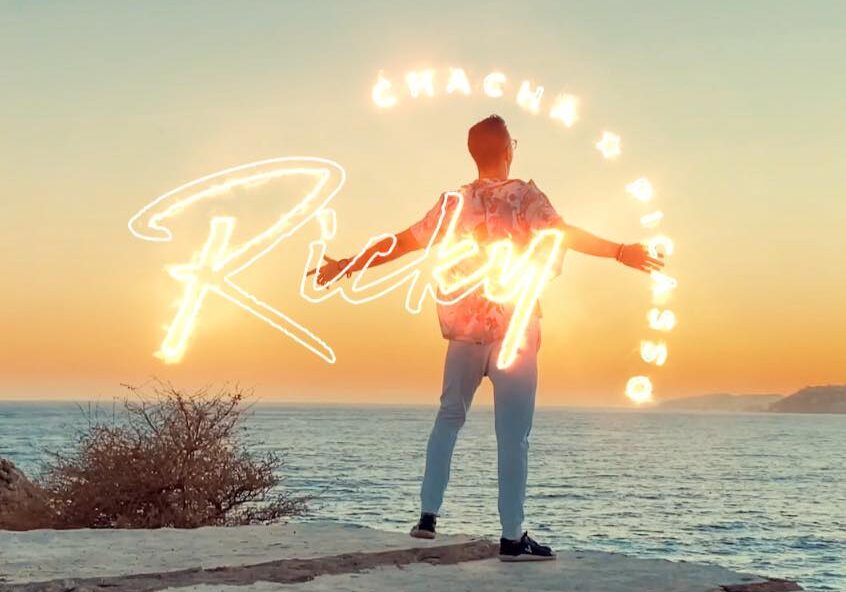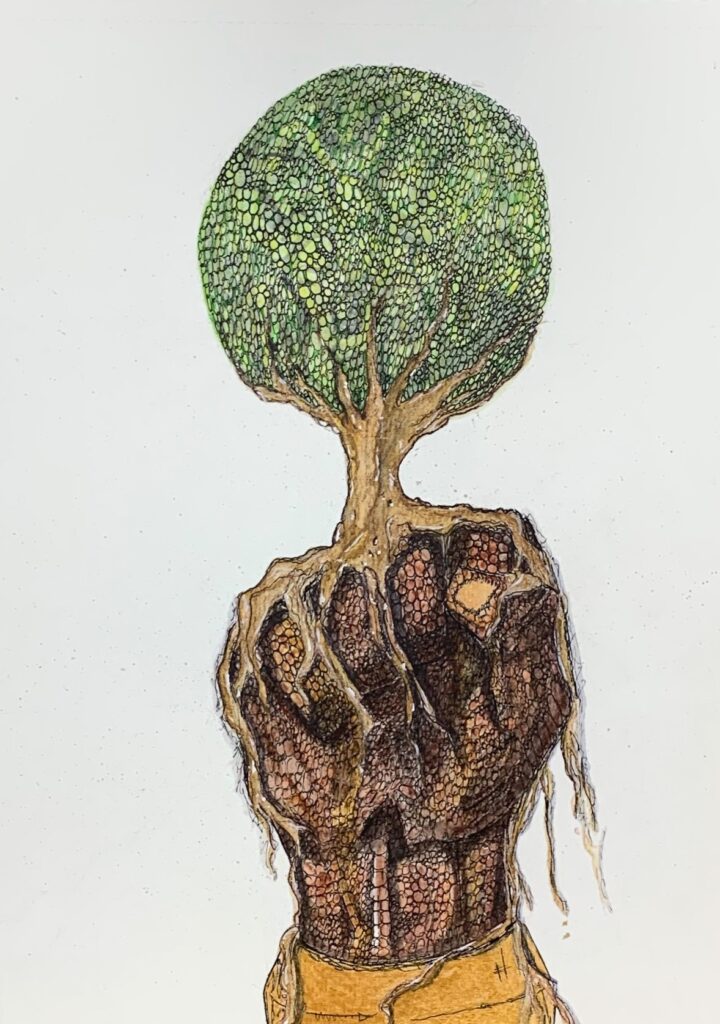Ricky ChaCha Picasso is featured in this edition of Dance Spotlight! Ricky currently lives in Miami, but he will be relocating to Spain in the near future. He is a professional dancer and instructor and his move to Spain is a bold step to further his career! He was nominated by Leah Duque. Leah said, “Ricky is an awesome dancer and he is making big waves in the latin dance community. He is definitely someone dancers should follow!” Check out some interesting facts about Ricky including how dance played an important role in his mental and physical recovery from injuries sustained during a tour of duty in Iraq. Also, check out one of his poems and art pieces!
Want to nominate someone to be in the Dance Spotlight? Contact us!
What (or who) originally inspired you to try Latin dancing? OR What are your first memories of latin dancing?
I was born in Puerto Rico and I grew up in New Jersey, and there was a big Puerto Rican community where I lived. I learned to dance when I was about 12 years old. I was a little nerd and I still am! At that age girls weren’t looking at me, and I was getting bullied and picked on. I have a sister that is a year older than me and I hung out with the bigger kids. I always saw them dancing. One day I asked my mom if I could learn how to dance and she taught me how to dance salsa, merengue and bachata. I started high school when I was 12 and I was a lot younger than everyone else, so I was always attached to my sister. I was really skinny and small. There was a group of salsa dancers that would meet in the afternoon. One day we went to a firehouse party. These were parties at fire stations that were meant for teenage kids, and it was a way to keep kids out of the streets. I remember watching my boy named Mike (nicknamed ‘Smiley’) dancing salsa with a girl. I remember seeing the smile on his face and how happy they looked. It was like time had stopped. It was at that moment (at age 13) that I knew I wanted to be a professional salsa dancer.
Can you describe the impact Rodrigo Cortazar has had on your career?
He has really pushed me to not be scared to be my own dancer and to work on the creativity that is Mixed Media. I’ve seen him study other styles and dancers, and how he can incorporate what he’s learned into his salsa fusion. He’s encouraged me to be part of the process when we create things. He gives me the space and opportunity to influence what he’s creating. He’s taught me to be humble and accept advice from everywhere. He’s always very kind wherever we go.
I never really had a mentor in salsa and he took me under his wing. I’ve had a lot of growing pains and things I had to figure out for myself, and I’m grateful for that. It allowed me to be a bit more raw in his ability to mold my dancing, and I didn’t have to break a lot of bad habits. I had to learn a lot of technique and fundamentals, and he pushed me to reach the level I’m at today. This has made me hungrier and more motivated. Rodrigo encourages me even and tells me I have more to give even when I’m hard on myself or feel like giving up.
What do you hope to accomplish by taking this exciting step in your dance journey?
I feel like I can bring something different to the dance community, and there are two niches that I do that no one else really offers.
The first niche is teaching the functional therapy, patterns and movements that are based on biomechanics and how our bodies naturally move. Studying therapy has given me a different perspective on dance. I want to teach dancers how to understand the vessel that they live in and how to maximize their dance ability without sacrificing their bodies. You hear about dancers suffering all types of injuries because we sometimes do movements that aren’t natural. Dancers try to attain hypermobility in hopes of attaining new levels in their dance career and this a very backwards way of thinking when it comes to movement.
The second niche is I’ve developed is a unique curriculum of how to teach social dancing. No one really offers a curriculum of how to actually better yourself as a social dancer. Everyone teaches patterns or certain theories here and there, but I have yet to find a teacher who has broken down all the dynamics of social dancing. The follow and the lead relationship. The dynamic of creating and exchanging energy between the follow and lead. It’s something that I’ve been teaching around the world. I’ve received great feedback and many dancers ask me why more teachers aren’t teaching these concepts. I started developing this in 2014 because social dancing was the weakest aspect of my dancing. I want to make it tangible to learn social dancing without learning just a bunch of turn patterns and trying to remember them which usually never works.
My goal is to bring these concepts across the world and cement myself as a pioneer in these niches. I believe I have all the tools, resources and will to do it. It’s just a matter of believing in it and taking the plunge.
You suffered severe spine and nerve damage while doing a tour of duty in Iraq? Describe how dance was therapeutic to your recovery.
I was a machine gunner in Iraq and it was one of our last missions there. The road was dark and there was a barrier in the middle of the road where we were headed. I called down to the driver that we were about to hit something and at the speed we were going it might have killed us if we crashed. Long story short, he slammed on the breaks and I go flying out of the turret. But because I had my seatbelt on, I was whiplashed back and my lower back smashed into a ceramic plated ring that protects the gunners. It’s like taking an iron rod and hitting someones back with it. I was running on adrenaline and didn’t feel it for a few days, but then I started to gradually feel it. Six years later I was supposed to redeploy to Africa and during a training scenario I twisted awkwardly and popped something in my back. I went to get treatment and the doctors told me that I had fractured it in Iraq, and I just didn’t know.
I suffered depression when I got back from Iraq. I was drinking a lot and even tried to commit suicide. Shortly after that I found the salsa scene. I had been dancing since I was 12, but I didn’t realize that a salsa scene existed. I remember going out to dance and ended up becoming great friends with Jorge Charun. He’s a popular DJ is South Florida. I started frequenting his events and it felt like I was reborn. I had a new purpose, drive and I felt like I’d found my calling. I went to a studio and offered to teach. They said I had to teach ‘On2’. At the time, I didn’t even know what On2 was. I learned their entire curriculum in a month. I was obsessed and I never looked back.
Can you discuss Mixed Media and how it has helped your dance journey?
I thought my dance life was over when I had to relearn how to walk during therapy. The functional therapy and patterns were able to heal my body and now I dance better than I did before.
Mixed Media was born out of the arts. In additional to dancing, I’m also a poet, painter, and I do martial arts. An example of mixed media in painting would be using water colors, colored pencils, acrylics and chalk on an art piece. I used to breakdance, do popping, locking, waves – and a lot of different styles of dance. I’ve always wanted to do a salsa/hip-hop fusion. Usually dancers alternate back and forth between salsa and hip-hop when integrating them into their performances, and I wanted to create something that didn’t look so choppy and disconnected. That’s when I started diving into the mixed media aspect of dance.
Do you have any favorite poems or art that you’d like to share?
POEM
“Parallel Universe”
I still find myself frequenting that parallel universe we call Memories.
As I elope with of hopes of meeting you there,
the corners of my mouth run to meet my eyes,
tuning into the reflection of that miracle that is your smile.
Dusk awakens from her slumber,
and dons her stellar night gown.
As I close those windows to my soul.
A fait scent of crisp sunsets in Florence still linger in the room.
Dawn greeted us with freshly brewed coffee and small coconuts that washed up on the shore of your eyes.
ART
Inspired by the Black Lives Matter movement.
You had the opportunity to teach dance to South African kids who lived in an orphanage. You called this the greatest experience in your dance career. Can you describe how you got the opportunity to teach there and why it was your greatest moment?
I’ve been trying to explore the world and expand my horizons. I fund everything myself and I do get paid at many of the places when I teach. I decided to go to South Africa for three months and one of my goals was to work with orphaned kids. Sure enough, my friend and I were able to meet the right people (as if it was meant to be) and we were offered the chance to teach at an orphanage. I was like, ‘Heck yeah!’ It was in a dangerous area, but I wasn’t scared. I went on 30+ missions in Iraq and frequently traveled through terrorist areas.
I went for five consecutive days and taught the kids salsa. They hadn’t seen someone who looked me from my skin complexion to all the tattoos. They’d never heard the music or seen that style of dance. I was an teachers assistant at a preschool when I was 16, and I’ve always loved working with kids. I’ve been a lifeguard and swim instructor for kids – so I’ve always had a special place in my heart for kids. I know what it means to have someone come in your life when you’re young and create an impact, so I’ve always wanted to be that for kids.
The kids were so appreciative and responsive to the dance and we incorporated some of their moves into the salsa shines they learned. The ability to give to them, and what they gave to me in terms of creating special moments no matter your situation. It was a very impactful lesson.

